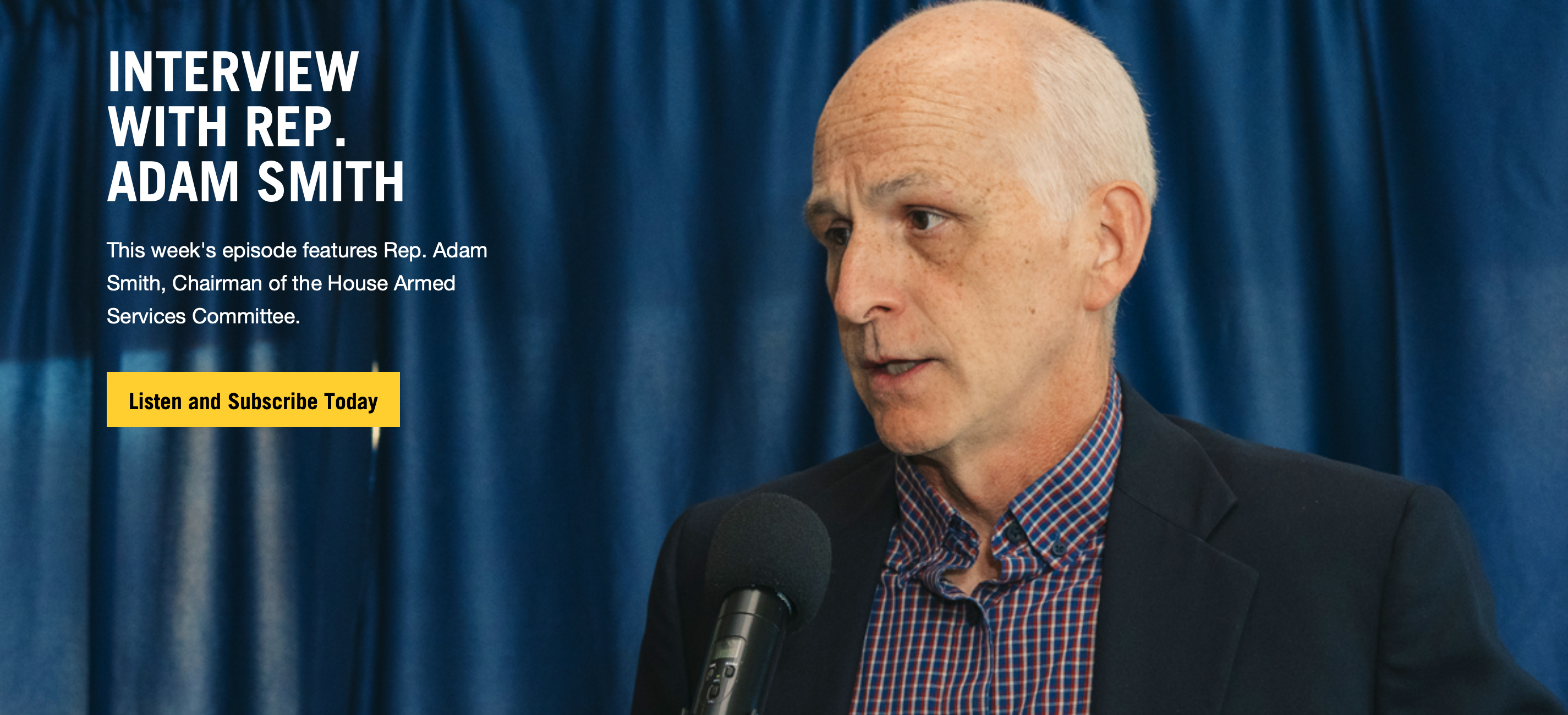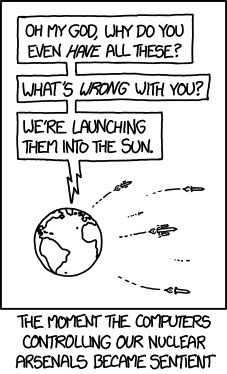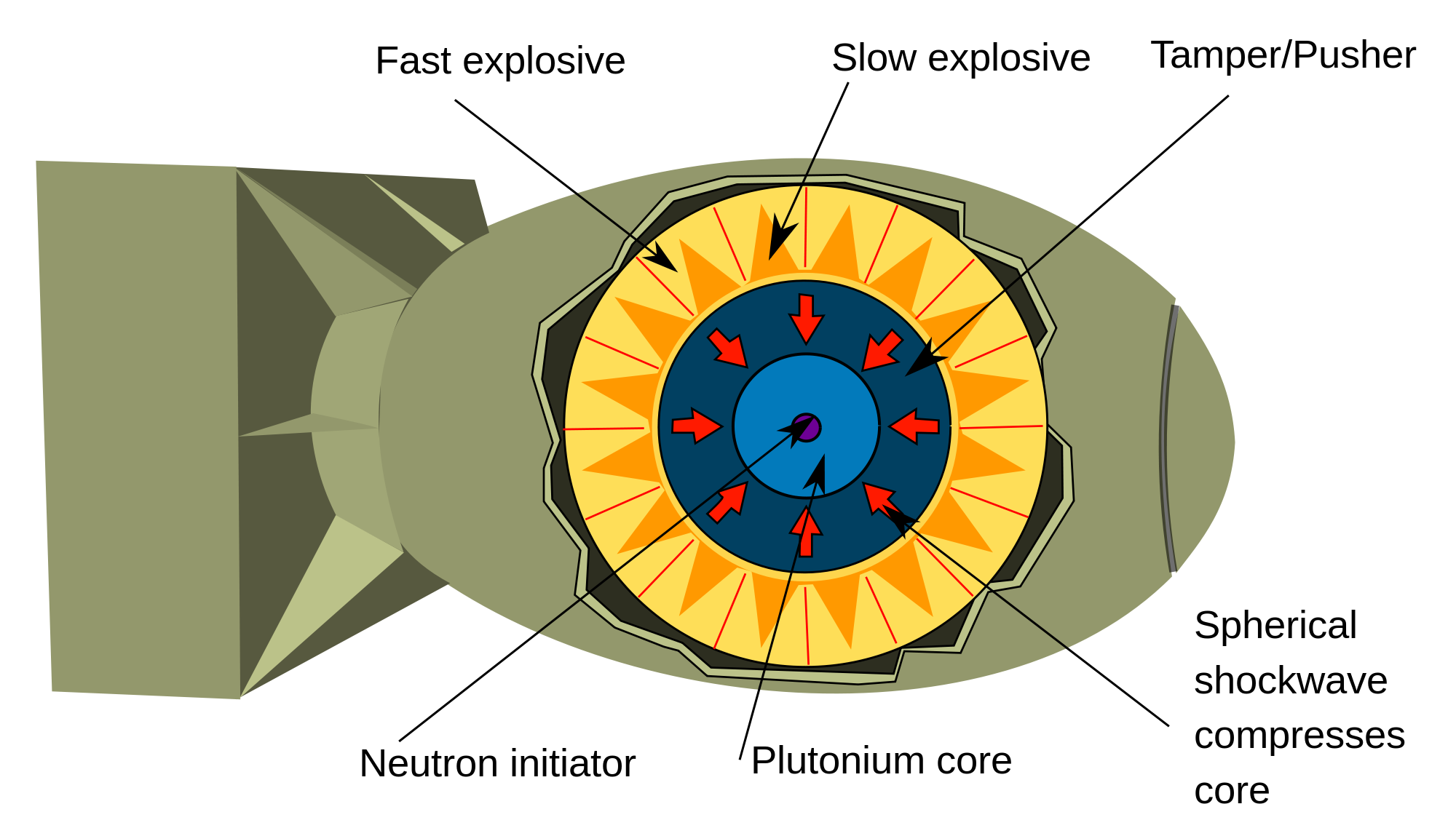2020
75 years after Hiroshima, should U.S. president have authority to launch nuclear attack?
On August 6, 1945, the United States dropped the first atomic weapon on Hiroshima, Japan. Seventy-five years later, [PBS] NewsHour revisits how the president became the sole authority on when nuclear weapons are used. Nick Schifrin reports and talks to former Secretary of Defense William Perry, co-author of “The Button: The New Nuclear Arms Race and Presidential Power from Truman to Trump.”
BY: Nick Schifrin | pbs.org
Judy Woodruff:
On August 6, 1945, the United States dropped the first atomic weapon on Hiroshima, Japan. In the coming days, we will examine this 75th anniversary, the bomb’s immediate aftermath and its lasting legacy. Today, Nick Schifrin looks at the president’s sole authority to launch such a weapon and how that authority came to be.
The 75th Anniversary of Hiroshima and Nagasaki: A Renewed Call for Our Day
“A world of peace, free from nuclear weapons, is the aspiration of millions … ” — Pope Francis, Address at Atomic Bomb Hypocenter Park (Nagasaki), November 24, 2019.
PEOPLE OF GOD – Santa Fe Archdiocese, August 2020
PRAY
Pray with your community for the causes of peace and nuclear disarmament to be made a reality.
- Sample bulletin announcements and prayers of the faithful for use on August 2nd and 9th, 2020.
- Share this prayer (en Español) with your networks, or other prayers for peace on August 9th.
LEARN
Learn about what the Church teaches regarding nuclear weapons.
- Nuclear Weapons and Our Catholic Response: A Catholic Study Guide for use with the filmNuclear Tipping Point, revised June 2020.
- Statements of the U.S. bishops on Nuclear Weapons
- Pope Francis on Nuclear Weapons at Atomic Bomb Hypocenter Park (Nagasaki), November 24, 2019.
ACT
Put what your faith into action by raising your voice to support nuclear disarmament.
- Tell Congress to support extension of the New START Treaty and a continued U.S. moratorium on nuclear testing.
- Ask your friends and family to join you in taking action.
On 75th Anniversary of Japan Nuclear Bombings, Sierra Club Continues Calls for Elimination of Nuclear Weapons
Today, the Sierra Club rises with the survivors of the Hiroshima and Nagasaki nuclear bombings in continuing our call for an elimination of all nuclear weapons worldwide. The creation and storage of nuclear weapons is inherently risky, and accidents, testing, and use of nuclear weapons are recklessly and unnecessarily dangerous for communities — particularly low income and communities of color — and our environment.
“The Sierra Club calls on Congress to resist the current renewal of the nuclear arms race and to ban the use of nuclear weapons.”
Thursday, August 6, 2020 – Contact: Cindy Carr, cindy.carr@sierraclub.org
 WASHINGTON, D.C. — To commemorate the 75th anniversary of the WW II nuclear bombings of Hiroshima and Nagasaki, the Sierra Club has joined with the Hibakusha Survivors in calling for the elimination of all nuclear weapons globally. Since 1945, nearly 100,000 nuclear weapons have been manufactured, costing trillions of dollars and destroying communities and the environment through the mining, refining, and weaponizing of uranium.
WASHINGTON, D.C. — To commemorate the 75th anniversary of the WW II nuclear bombings of Hiroshima and Nagasaki, the Sierra Club has joined with the Hibakusha Survivors in calling for the elimination of all nuclear weapons globally. Since 1945, nearly 100,000 nuclear weapons have been manufactured, costing trillions of dollars and destroying communities and the environment through the mining, refining, and weaponizing of uranium.
The Sierra Club opposes the creation and testing of nuclear weapons and supports the Treaty on the Prohibition of Nuclear Weapons (TPNW).
Urgency to bear witness grows for last Hiroshima victims
“We must work harder to get our voices heard, not just mine but those of many other survivors,” Lee [ Jong-keun] said in an interview Tuesday at the Hiroshima Peace Memorial Museum. “A nuclear weapons ban is the starting point for peace.”
Mari Yamaguchi Associated Press | santafenewmexican.com
HIROSHIMA, Japan
For nearly 70 years, until he turned 85, Lee Jong-keun hid his past as an atomic bomb survivor, fearful of the widespread discrimination against blast victims that has long persisted in Japan.
But Lee, 92, is now part of a fast-dwindling group of survivors, known as hibakusha, that feels a growing urgency — desperation even — to tell their stories. These last witnesses to what happened 75 years ago Thursday want to reach a younger generation that they feel is losing sight of the horror.
The knowledge of their dwindling time — the average age of the survivors is more than 83 and many suffer from the long-lasting effects of radiation — is coupled with deep frustration over stalled progress in global efforts to ban nuclear weapons. According to a recent Asahi newspaper survey of 768 survivors, nearly two-thirds said their wish for a nuclear-free world is not widely shared by the rest of humanity, and more than 70 percent called on a reluctant Japanese government to ratify a nuclear weapons ban treaty.
Atomic-bomb survivors seek new ways to keep their memories alive
Around the world, non-proliferation efforts are faltering
For seventeen year-old Takeoka Chisako, August 6th, 1945 was supposed to be a day off. She had planned to meet two girlfriends at 8:15 that morning, at a train station on the west side of Hiroshima. She was running late, and as she stepped outside her house she lifted a pocket mirror to her face. Then she saw a flash and heard a bang. When she regained consciousness she found herself lying in a potato field 30 metres away, a mushroom cloud rising in the sky. People with charred skin dangling from their arms came rushing over a nearby hillside. They cried for help, but were too feeble to speak their names and too weak to drink the water Ms Takeoka brought them. “Then one by one, they died,” says Higashino Mariko, Ms Takeoka’s daughter.
Hiroshima after 75 years: Walking the path of the atomic bomb
74-year-old [Kosei Mito] turns to a page in one of his binders with a large quote Pope John Paul II made during a visit to Hiroshima in 1981, one that’s inscribed on a memorial inside the Hiroshima Peace Museum.
“To remember the past is to commit oneself to the future.”
“You’re walking the path of the atomic bomb.”
Unlike the pandemic, nuclear war can be stopped before it begins
Seventy-five years after Hiroshima and Nagasaki, the anti-nuclear movement is taking big steps toward abolition.
BY: MARINA MARTINEZ | wagingnonviolence.org
Nuclear weapons have been posing a threat to humanity for 75 years — ever since the U.S. bombings of Hiroshima and Nagasaki in August 1945.
These days, our focus is understandably on the COVID-19 virus and the threat it poses to human life. But as we commemorate the anniversary of these bombings, it is important to acknowledge that unlike the coronavirus, nuclear weapons can only be remediated with prevention. Millions of people could be killed if a single nuclear bomb were detonated over a large city, and the added threats of radiation and retaliation could endanger all life on Earth.
U.S. LAUNCHES MINUTEMAN III MISSILE TEST LESS THAN 48 HOURS BEFORE 75TH ANNIVERSARY OF HIROSHIMA ATOMIC BOMBING
“The unnecessarily provocative test by the U.S. today is an important reminder that the nuclear threat remains very real, and that there are people in this country – along with a few other countries – who are willing to sacrifice us all in a battle that can never be won and must never be fought.”
 For Immediate Release Contact: Sandy Jones (805) 965-3443; sjones@napf.org
For Immediate Release Contact: Sandy Jones (805) 965-3443; sjones@napf.org
Rick Wayman (805) 696-5159; rwayman@napf.org ragingpeace.org
Santa Barbara, CA – The U.S. Air Force launched an unarmed Minuteman III intercontinental ballistic missile Tuesday morning, August 4, at 12:21 a.m. PDT from Vandenberg Air Force Base. The missile traveled over 4,200 miles to the Kwajalein Atoll in the Marshall Islands.
While Air Force Global Strike Command asserts that missile tests are scheduled years in advance, it is difficult to ignore the timing of this test – less than 48 hours before the 75th anniversary of the U.S. atomic bombing of Hiroshima.
Rick Wayman, CEO of the Nuclear Age Peace Foundation, a non-profit based in Santa Barbara committed to solving the most dangerous technological, social, and psychological issues of our time, including the abolition of nuclear weapons, commented on the missile test. He said, “This week, the majority of the world is solemnly remembering the 75th anniversaries of the U.S. atomic bombings of Hiroshima and Nagasaki, and vowing that such a thing will never happen again. Hundreds of thousands of our fellow human beings were indiscriminately slaughtered by two primitive U.S. atomic bombs in August 1945. The weapon that was tested this morning is designed for far greater damage.”
Trump team’s case for new nuke cites risks in current arsenal
The administration justified new atomic weapons by citing rarely acknowledged vulnerabilities in U.S. nuclear arsenal
BY: JOHN M. DONNELLY | rollcall.com
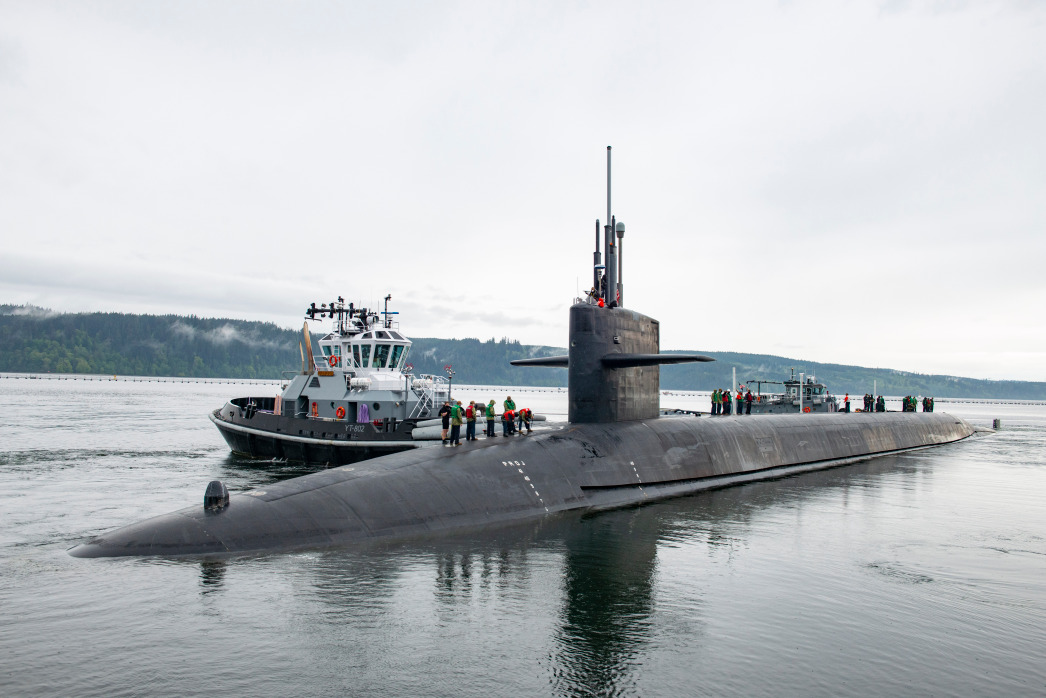
The Trump administration, in a closely held memo to lawmakers this spring, justified developing the first new U.S. atomic weapon since the Cold War by citing vulnerabilities and risks in the current nuclear arsenal that are rarely or never acknowledged in public.
In an unclassified five-page white paper sent to Congress in May, the Pentagon and the Energy Department’s National Nuclear Security Administration, or NNSA, affirm a point they have long minimized: the dangers of land-based missiles ready to launch minutes after a warning of enemy attack.
They also discuss threats to U.S. nuclear missile submarines that have previously been depicted as all but undetectable. They say, too, that a new class of ballistic missile submarines lacks the firepower of its predecessors, creating a need for a lighter and more powerful type of warhead — in addition to the two existing types. As for the current two sets of warheads, they say they have too few of the most destructive kind and too many of the less forceful variety — and excessively rely on the latter.
Gov. argues against Holtec nuclear storage site
Gov. Michelle Lujan Grisham sent a letter to President Donald Trump on Tuesday, arguing against a proposed nuclear waste interim storage facility in southeast New Mexico.
“The proposed (facility) would join the ranks of uranium mining, nuclear energy and defense-related programs that have long created risks to public health and the environment in the state of New Mexico that are disproportionately greater than such risks to the general population of the United States,” she wrote.
BY: THERESA DAVIS, JOURNAL STAFF WRITER | Copyright © 2020 Albuquerque Journal
The proposed Holtec International site would store 500 stainless steel canisters of the nation’s spent nuclear fuel on 1,000 acres between Carlsbad and Hobbs, with a full storage capacity of 10,000 canisters.
“New Mexico has grave concerns for the unnecessary risk to our citizens and our communities, our first responders, our environment, and to New Mexico’s agriculture and natural resource industries,” Lujan Grisham wrote in the letter.
LANL trolley that carries radioactive material broken down
“If LANL can’t drive a trolley or clean up old stuff without exposing people, how can they safely expand plutonium pit production?” asked Scott Kovac, research and operations director for nonprofit Nuclear Watch New Mexico.
BY: SCOTT WYLAND | santafenewmexican.com
An internal trolley that carries radioactive material to several glove-box areas at Los Alamos National Laboratory’s plutonium facility has been broken for almost two months, hindering operations at the site, a federal watchdog report said.
The trolley became disabled in early June, and its bucket is stuck with a container of nuclear material inside, according to a report issued by the Defense Nuclear Facilities Safety Board.
“However, the location is not creating any radiological exposure concerns,” the report said.
The report noted the idled trolley has hampered the internal transfer of radioactive material to the sealed containers with protective gloves attached, but it didn’t say to what extent.
“F-35s Don’t Help Families Pay Their Bills”: GOP Slips Pentagon Into COVID Bill
“People are dying, or worried about keeping a roof over their families’ heads, or cutting hours because their kids’ schools are closed,” said Anthony Weir, a lobbyist on nuclear disarmament and Pentagon spending at the Friends Committee on National Legislation. “And this is the time to jam some military procurement into this year that you didn’t get last year?”
BY: JAKE JOHNSON | truthout.org

SAMUEL KING JR. / U.S. AIR FORCE
In a floor speech late Monday, Senate Majority Leader Mitch McConnell described the GOP’s newly released coronavirus stimulus package as a “carefully tailored” plan to provide financial relief to desperate Americans.
But a look at the legislative text (pdf) released by Senate Republicans shows the HEALS Act is replete with massive gifts to the Pentagon and defense contractors that would do nothing to aid the unemployed, provide nutrition assistance to hungry children, prevent an avalanche of evictions, or stop the spread of coronavirus.
“Last time I checked F-35s don’t help families pay their bills,” Rep. Chuy García (D-Ill.) tweeted in response to the GOP’s proposal of $686 million in spending on new fighter jets.
Pending Energy Spending Bill Mixed Bag for INL
“We all know major change takes time, and we know that it is difficult to turn this ship, but we are doing it in our time…We can and must do better than refight a tired old battle on Yucca Mountain.” – Rep. Marcy Kaptur, D-Ohio
By: NATHAN BROWN | postregister.com
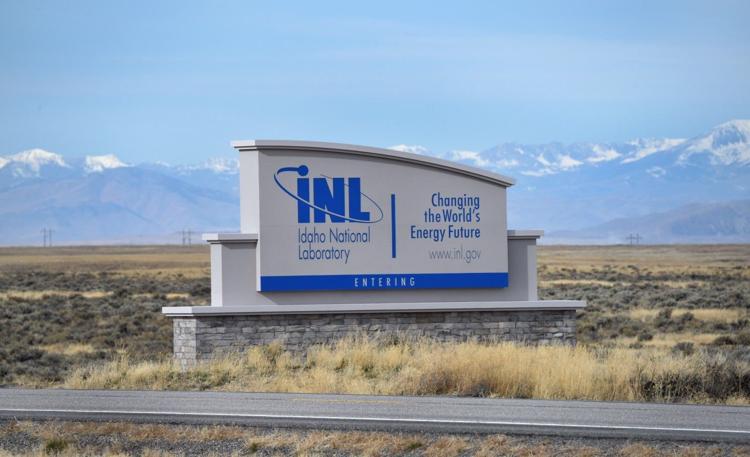
The Energy and Water appropriations bill Congress is expected to take up next week represents a mixed bag for Idaho National Laboratory, with spending on some priorities kept flat and slight increases for others.
The U.S. House Appropriations Committee voted along party lines earlier this month, with the Democrats in favor and the Republicans opposed, to advance the bill. At $49.6 billion in the regular budget, it represents a $1.26 billion increase over this year’s spending, according to a committee reporting summarizing the bill. However, on top of this it also includes an additional $23.5 billion in emergency one-time funding meant to bolster various clean energy projects and aid in recovery from the coronavirus pandemic that has led to pushback from Republicans. It and six other spending bills are expected to be considered by the full House this week, according to a news release from the committee.
Rep. Tulsi Gabbard Rebuts U.S. Claim that Marshall Islands Nuclear Waste Site is Safe
“The U.S. government is responsible for this storage site and must ensure the protection of the people and our environment from the toxic waste stored there,” Gabbard said in a news release announcing her amendment to the defense bill.
BY: SUSANNE RUST | latimes.com

One of Hawaii’s high-profile politicians has dismissed a recent Department of Energy report concluding that a leaking U.S. nuclear waste repository in the Marshall Islands is safe for people there.
She called for the department to convene a more independent assessment of the waste site.
“I think it’s time the Department of Energy relied on someone with fresh eyes to examine the situation,” said U.S. Rep. Tulsi Gabbard, one of Hawaii’s two Democratic House members, in a recent interview with The Times.
Gabbard, who gained national attention by launching what some called a quixotic campaign for the Democratic presidential nomination, has been outspoken in Congress on behalf of the Marshall Islands, which the United States used as a testing site for scores of nuclear weapons during the Cold War.
She’s pushed to reinstate Medicaid eligibility to people from the Marshall Islands, Micronesia and Palau who are working and living in the United States but lack access to healthcare. She also was instrumental in requiring the Department of Energy to reexamine the safety of Runit Dome, a leaking nuclear waste repository in the Marshall Islands, as part of the 2019 National Defense Authorization Act.
Novel gas-capture approach advances nuclear fuel management
“If one day we want to treat the spent fuels, which in the U.S. are currently stored in pools and dry casks at the nuclear power plant sites, we need to handle the volatile radionuclides.” explains Ju Li, MIT’s Battelle Energy Alliance Professor of Nuclear Science and Engineering and professor of materials science and engineering. “Physisorption of krypton and xenon is a good approach, and we were very happy to collaborate with this large team on the MOF approach.”
By: PETER DUNN, MIT | phys.org

Nuclear energy provides about 20 percent of the U.S. electricity supply, and over half of its carbon-free generating capacity.
Operations of commercial nuclear reactors produce small quantities of spent fuel, which in some countries is reprocessed to extract materials that can be recycled as fuel in other reactors. Key to the improvement of the economics of this fuel cycle is the capture of gaseous radioactive products of fission such as 85krypton.
Therefore, developing efficient technology to capture and secure 85krypton from the mix of effluent gasses would represent a significant improvement in the management of used nuclear fuels. One promising avenue is the adsorption of gasses into an advanced type of soft crystalline material, metal organic frameworks (MOFs), which have extremely high porosity and enormous internal surface area and can incorporate a vast array of organic and inorganic components.
Top Ex-SCANA Official Stephen Byrne Pleads Guilty in SC Nuclear Fiasco Fraud Case
Stephen Byrne, a top executive of the now-defunct SCANA electric utility, pleaded guilty Thursday to criminal conspiracy fraud charges in federal court in Columbia.
BY: John Monk & Joseph Bustos | thestate.com
Byrne was part of a conspiracy that engineered a “cover-up” to hide the extent of the publicly traded company’s financial problems caused by the nuclear project’s difficulties, according to charging documents in his case. “Through intentional misrepresentations,” Byrne and others deceived regulators and customers, documents said.
White House held talks over resuming US nuclear tests, John Bolton says
Ex-Trump adviser and testing advocate tells Guardian ‘certainly it was discussed’ but no decision was made by the time he left
BY: JULIAN BORGER | theguardian.com
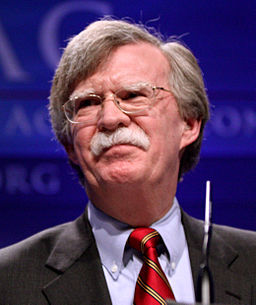
White House officials held a series of discussions over the past two years on the possibility of resuming US nuclear testing, according to the former national security adviser John Bolton.
“Certainly the subject was discussed,” Bolton, a fierce advocate of testing, told the Guardian. However, there was opposition from some in the administration who felt current computer-based testing of US warheads was sufficient, and no decision was made by the time Bolton left the White House last September.
When the prospect of the first US underground nuclear test in nearly three decades came up at a White House meeting in May, it triggered an outcry from arms control advocates and a Democratic amendment to the 2021 National Defense Authorization Act, blocking funding for preparations for a test.
Bolton, who has published a memoir on his time in the Trump White House titled The Room Where It Happened, said the issue was discussed in general terms on a number of occasions while he was national security adviser from April 2018 to September 2019. However, the discussions did not become “operational” as his priority had been to take the US out of the Intermediate-range Nuclear Forces (INF) treaty.
Ohio Nuclear Power Scandal
As [David] DeVillers described it at a press conference: it was the “largest bribery, money laundering scheme ever perpetrated against the people of Ohio.”
BY: KARL GROSSMAN | counterpunch.org
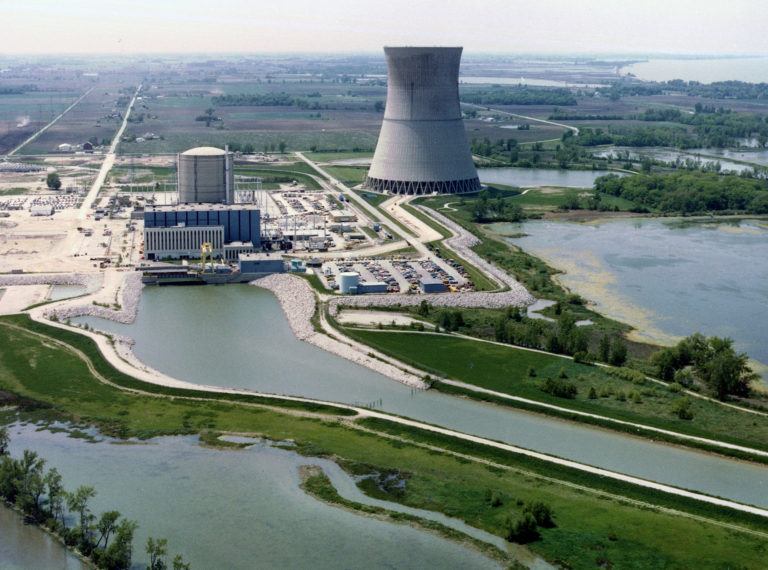
The U.S. Attorney’s Office and FBI this week charged the speaker of the Ohio House of Representative and four others in a $61 million scheme to use $1 billion in ratepayers money to keep two decrepit nuclear power plants operating.
And, said the U.S. Attorney for the Southern District of Ohio, David DeVillers, at a press conference after the arrests Tuesday: “This is by no means over. We are going to continue with this investigation.”
Those charged were involved in a “Conspiracy to Participate, Directly or Indirectly” in the scheme “through a Pattern of Racketeering Activity,” declared the “Offense Description” that headed an 81-page federal “Criminal Complaint.”
A Dirty Battle for a Nuclear Bailout in Ohio
“It has been known since the late 1970s that the cost of constructing nuclear plants in the United States is very high, but the cost gap between nuclear electricity and other alternatives has increased dramatically in the last decade. In its most recent estimate, the Wall Street firm Lazard estimated that a new nuclear plant will generate electricity at an average cost of $155 per megawatt hour, nearly four times the corresponding estimates of around $40 per megawatt hour each for new wind and solar energy plants. The average cost for natural gas plants is $56 per megawatt hour.
The gap will only grow larger. While the costs of nuclear power have been increasing, the costs of wind and solar power have declined by around 70 to 90 percent in the last decade.”
BY: Shakiba Fadaie & M. V. Ramana | thebulletin.org

Last July, Ohio’s governor signed House Bill 6 (HB6) to provide FirstEnergy (now Energy Harbor), a large electric utility, with subsidies of nearly $150 million per year to keep its Perry and Davis-Besse nuclear power plants operating. Ohio is only the fifth US state to offer such subsidies; other states include New York, Illinois, New Jersey, and Connecticut. Although the subsidies are justified by some as necessary for climate mitigation, in the latter four states, electricity generation from natural gas, which results in greenhouse gas emissions, has increased since 2017, when these subsidy programs started kicking in. Moreover, in Ohio, subsidies are also being extended to coal power plants, providing the clearest illustration that what underlies the push for subsidies to nuclear plants is not a result of a real commitment to climate mitigation but a way to use climate concerns to bolster the profits of some energy corporations.
Video: Obstacles to Nuclear Abolition — a discussion with David Swanson, Alice Slater, and Bruce Gagnon
David Swanson, Alice Slater, and Bruce Gagnon discuss obstacles to nuclear abolition and the U.S.-Russia relationship.
Inhofe, Reed Praise Senate Passage of National Defense Authorization Act for Fiscal Year 2021
The United States Senate today passed the National Defense Authorization Act for Fiscal Year 2021, 86-14.
Thursday, July 23, 2020 PRESS RELEASE: https://www.armed-services.senate.gov/press-releases/inhofe-reed-praise-senate-passage-of-national-defense-authorization-act-of-fiscal-year-2021
- Full text of Bill: https://www.congress.gov/116/bills/s4049/BILLS-116s4049rs.pdf
- Report to go with Senate NDAA, which passed the full Senate on July 23: https://www.congress.gov/116/crpt/srpt236/CRPT-116srpt236.pdf
Responsibility for Los Alamos Plutonium Facility 4 and Technical Area 55
Plutonium Facility 4 (PF–4) at Los Alamos National Laboratory’s Technical Area 55 is the primary plutonium handling facility within the National Nuclear Security Administration (NNSA). PF–4 is currently undergoing major modifications to produce war reserve plutonium pits, with a production goal of 30 pits per year by 2026.Continue reading
Bribed Ohio’s $60 Million Radioactive Uproar Rocks the 2020 Vote
“Ohio is in election-year turmoil over a Trump-supported nuke bailout bought with bribery. Whether public fury will kill the handout and affect the fall presidential election remains to be seen…But Bribed Ohio 2020 has clearly gone radioactive.”
BY: Bob Fitrakis & Harvey Wasserman | readersupportednews.com
Ohio’s biggest-ever bribery case is rocking America’s reactor industry … and the fall election.
Full details of the shocking arrest of Ohio’s powerful Speaker of the House are still unfolding.
But on Monday, the FBI charged Larry Householder and four associates with taking $60 million (that’s NOT a typo) in bribes from “Company A,” suspected to be the Akron-based nuke utility FirstEnergy. The company has not been formally named as the source of the bribe, but FE’s stock has since plummetted.
Trinity: 75 Years Later
On the 75th anniversary of the world’s first nuclear weapons explosion: The Trinity test near Alamogordo in 1945, KSFR News Director Tom Trowbridge spoke with a longtime New Mexico journalist about the anniversary.
Former SCANA Executive Pleads Guilty to Fraud Charges Tied to Failed SC Nuclear Project
“I’m glad there is going to be a little bit of justice and that Mr. Byrne is now pleading guilty to his crime, so it’s a matter of holding others accountable who were former executives of SCANA,” Tom Clements said. “I would anticipate that Kevin Marsh and Jimmy Addison are probably next in the queue to be charged, and hopefully others.”
BY: Andrew Brown & Avery G. Wilks | postandcourier.com
Covid-19 Stopped Water Pollution Monitoring At A Major Radioactive Site For Months
“Given LANL’s history it’s imperative that monitoring be robustly resumed,” Jay Coghlan, Executive Director of Nuclear Watch New Mexico, said in an email. “This is after all the Lab that use to claim that groundwater contamination was impossible… Now we know of heavy chromium and high explosives groundwater contamination which are a harbinger for more contaminants to come.”
BY: ERIC MACK | forbes.com

When the coronavirus and resulting Covid-19 pandemic closed everything in mid-March, TA-54 was one of the many places where all activity came to a virtual standstill.
Technical Area 54 is a part of Los Alamos National Labs (LANL) in New Mexico – the same Los Alamos that was home to the Manhattan Project, which ushered in the atomic era and today continues to produce radioactive triggers for nuclear weapons.
Within TA-54 is what’s called Area G. The federal government refers to as LANL’s “legacy waste management area.” For over 60 years, it has been a storage, processing and disposal area for different kinds of radioactive and otherwise toxic waste from LANL.
Nuclear Tests Have Changed, but They Never Really Stopped
75 years after the first explosive nuclear tests, now outlawed, sophisticated virtual testing allows American physicists to understand these weapons better than ever.
BY: DANIEL OBERHAUS | wired.com

JUST BEFORE SUNRISE on July 16, 1945—75 years ago today—a patch of New Mexican desert was incinerated during the first trial of the most destructive weapon ever created. The plutonium bomb used for the Trinity test left a 5-foot crater in the ground and turned the surrounding desert floor into a radioactive green glass. The blast bathed the peaks of the nearby Oscura Mountains in a blinding white light, and dozens of scientific observers watching from 20 miles away reported feeling an immense heat wash over them. As the light from the explosion faded, one of the architects of the bomb, Kenneth Bainbridge, gave a pithy appraisal of the event to J. Robert Oppenheimer, the project’s lead scientist: “Now we are all sons of bitches.”
And he was right. Less than a month later, the United States dropped the same type of bomb on Nagasaki, Japan, just three days after detonating a smaller nuclear warhead over Hiroshima. It effectively ended World War II, but it came at the price of well over 100,000 civilian lives and the enduring suffering of those who survived.
DOE Targets End to US Reliance on Russian Nuclear Fuel, Revived Domestic Capability
“Industry and NGO representatives did not agree with Brouillette’s assertions regarding U.S. reliance on Russian nuclear fuel.
“Brouillette overstated the U.S. commercial nuclear industry’s dependence of Russian uranium ore, Edwin Lyman, director of nuclear power safety at the Union of Concerned Scientists, told Utility Dive. “Most of it comes from Australia and Canada,” he said. Industry sources put the amount coming from Russia at 20%.”
By: JOHN FUNK | utilitydive.com
Dive Brief:
- The Department of Energy is working to end U.S. reliance on Russia for nuclear fuel, Secretary Dan Brouillette told members of the House Energy and Commerce Subcommittee on Energy last week.
- The department’s Nuclear Fuel Working Group wants American-sourced uranium and plans to begin processing U.S. uranium into high-grade fuel at a DOE facility in Portsmouth, Ohio, as early as next year, Brouillette said. The high-grade fuel is particularly important for new and smaller commercial reactors that DOE considers critical to grid stability as renewables replace aging fossil fuel power plants, he said.
- Brouillette also said the government has been able to blunt cyber attacks on the U.S. power grid “from places like Russia” and is working to ban Chinese-made grid equipment it believes could contain spyware, he told the subcommittee.
Global Zero Mourns the Loss of Dr. Bruce Blair
June 20, 2020
Source: Global Zero
“We are saddened to announce that Dr. Bruce G. Blair, Co-Founder of Global Zero and President of its Board of Directors, died unexpectedly on Sunday, July 19, following a sudden illness.
Derek Johnson, Executive Director of Global Zero, released the following statement on behalf of the organization regarding the recent passing of Dr. Blair:
“I am heartbroken at the sudden loss of my colleague, mentor, and dear friend, Bruce Blair.
“15 years ago, Bruce brought together an unprecedented international community of leaders and visionaries to build a new kind of movement to persuade governments to come to their senses and set aside the most catastrophic weapons on the planet. A veteran nuclear launch officer and unrivaled expert in command and control, Bruce understood — perhaps better than any single person alive — the urgency, enormity, and complexity of the nuclear threat. He built the Global Zero movement from the ground up and devoted all of his energy to making the world safer and better for all people.
DOE Responds To NMED Concerns About Lack Of Plan For Contaminated Materials Unearthed At Middle DP Road Since February
BY: MAIRE O’NEILL | losalamosreporter.com

The Department of Energy Office of Environmental Management Los Alamos and the National Nuclear Security Administration Los Alamos Field Office have responded to New Mexico Environment Department concerns about the DOE’s failure to address their plans for mitigation of contamination at Middle DP Road. Since February, there have been at least three discoveries of radioactive material in the vicinity of two housing projects underway on property that was turned over to Los Alamos County by NNSA for public use.
NMED has complained that DOE has failed to provide a schedule of preliminary screening plan (PSP) activities that indicates that DOE “understands the seriousness of this matter” and has not provided a timeframe for implementation of the plan. NMED has asked DOE for the basis of the delay in implementing the PSP “to ensure full transparency and understanding of why this important risk to public health is not being addressed in a more timely manner”.
Trinity’s Atomic Blast Changed the World
As the first atomic blast lit up the morning sky and scorched a vast desert landscape in south-central New Mexico, the scientists and engineers who had worked on this top-secret weapon felt a mixture of relief, awe and trepidation.
BY: SCOTT WYLAND | santafenewmexican.com
2019
Senate Dems likely to block defense spending in border wall dispute
ARTICLE BY JOE GOULD | defensenews.com
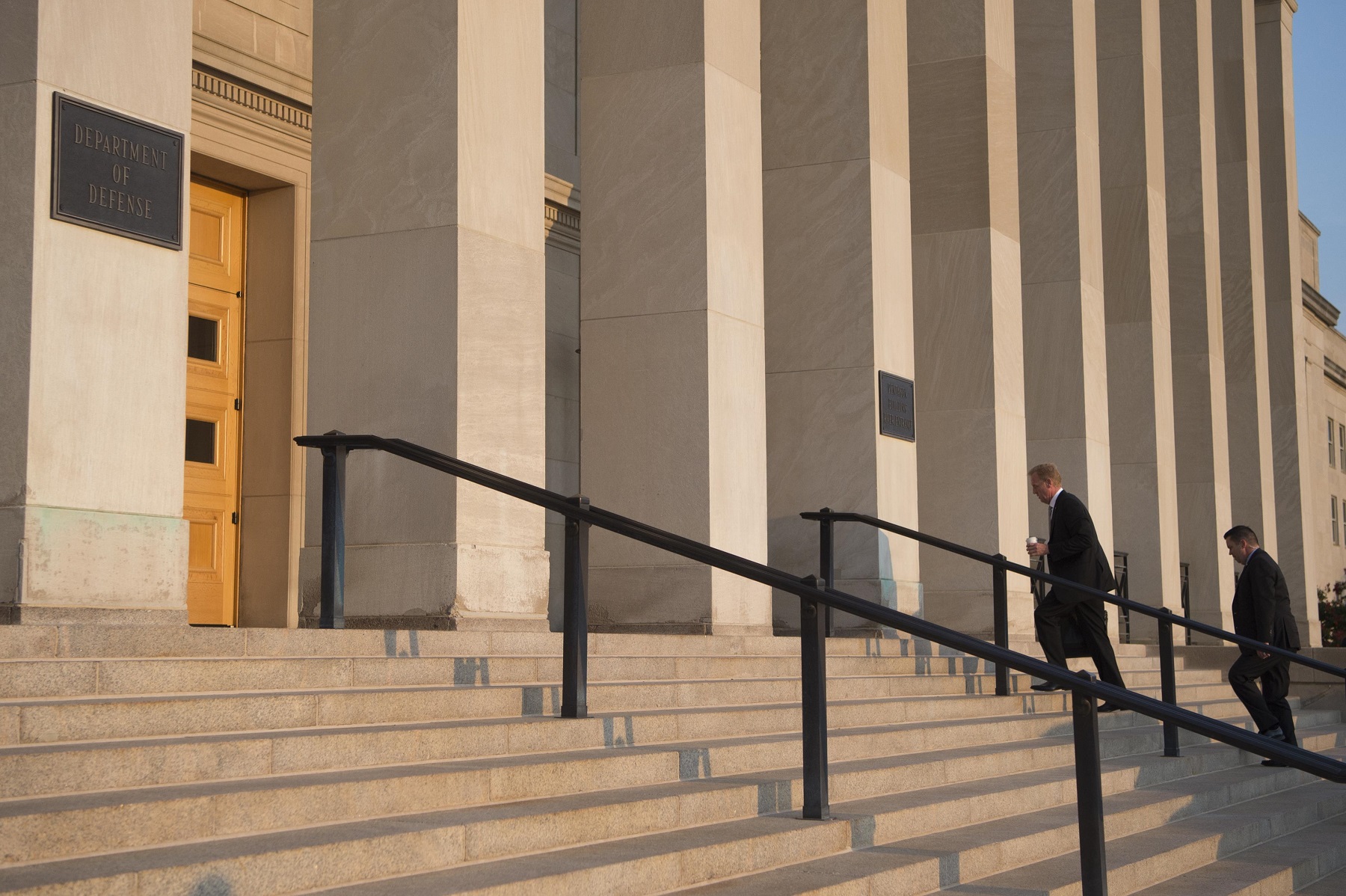
WASHINGTON ― Key Senate Democrats signaled Monday their caucus is likely to filibuster a proposed 2020 defense spending bill, which Senate Republican leaders plan to offer for a vote this week.In a Senate floor speech Monday, Majority Leader Mitch McConnell, R-Ky., dared Democrats to hold up the bill, accusing them of blocking a troop pay raise “for the sake of picking a fight with the White House,” even after the raid that killed Islamic State leader Abu Bakr al-Baghdadi.
October 29 This week on Press the Button: Chairman Adam Smith of the House Armed Services Committee. His remarks on the future of U.S. nuclear policy at the National Press Club last week made the news when he said that it was very unlikely major policy provisions would survive conference, particularly on the new, more usable nuclear weapon.
Hear his comments directly in a special edition of Press the Button called “The Chairman’s Choice.”
Geoff Wilson of Council for a Livable World discusses this surprise development with Michelle Dover and Mary Kaszynski of Ploughshares Fund on Early Warning.
Listen, Subscribe and Share on iTunes · Spotify · SoundCloud · YouTube · Google Play · Sticher
Also available on ploughshares.org/pressthebutton
The most radioactive state
Who will be the ultimate bearer of the nation’s nuclear waste?
In Mashable’s series Wasted, reporters dig into the myriad ways we’re trashing our planet. Because it’s time to sober up.
WRITTEN BY MARK KAUFMAN | .Jun 26, 2021 mashable.com
Of all the states in the union, and to the certain dismay of many local residents, New Mexico presently has the potential to become the future bearer of more and more of the nation’s nuclear excesses.
Though New Mexico will resist, and may prevail. “Folks in New Mexico are not going to take it,” said Albuquerque resident Don Hancock, who is the director of the Nuclear Waste Safety program at the Southwest Research and Information Center, an advocacy group focused on environmental and social justice. “We’ll stop this.”
“New Mexicans should not have to tolerate this risk.”
“The double standards applied by the Trump administration have been particularly damaging to international nonproliferation agreements…
Trump has pursued normalisation of relations with North Korea – a state that openly tested and detonated nuclear devices – while withdrawing from a nuclear deal with Iran, which was strictly abided by all provisions and was not working on developing a nuclear bomb.”
![Saudi Arabia's Crown Prince Mohammed bin Salman shakes hands with US President Donald Trump, at the G20 leaders summit in Osaka, Japan, June 29, 2019 [Handout via Reuters]](https://nukewatch.org/wp-content/uploads/2019/10/75630a33070b4c1fac591980c0650462_18.jpg)
Trump is laying the ground for a nuclear arms race in the Gulf
Trump’s mismanagement of the nuclear issue in the Middle East is damaging the international nonproliferation regime.
A SKINNY NDAA
Top Armed Services leaders in both houses of Congress are considering passing a slimmed-down National Defense Authorization Act that defers controversial measures for the sake of getting something passed, our colleague Connor O’Brien writes.
“It’s amounted to a backup plan,” House Armed Services Chairman Adam Smith (D-Wash.) told POLITICO, referring to the “skinny NDAA.” “It’s amounted to, we’re going to keep working on the bill itself, try to get resolved the top drawer issue of the [border] wall and we’ll have this as a backup discussion if necessary. I don’t have a problem with that.”
CHECKING TRUMP: More than 40 advocacy groups are out with a letter calling on lawmakers to oppose a final defense bill that doesn’t include the “core progressive priorities” aimed at constraining the Trump administration in the House-passed bill. That includes provisions to limit Trump’s Iran war powers, end U.S. support to the Saudi-UAE coalition in Yemen, bar new detainees at Guantanamo Bay, protect transgender troops and block deployment of new low-yield nuclear warheads.
October 22 Congressman Gerry Connolly (D-VA) gives us an insider view of the impeachment crisis and its impact on US foreign policy. Connolly serves on the Foreign Affairs and the Oversight Committees, both charged with the impeachment inquiry.
Early Warning features Joe Cirincione and Elizabeth Beavers discussing the Turkish president’s recent comments on nuclear weapons, and why we should keep the Open Skies Treaty. Joe Cirincione answers a question from Alec in Louisiana.
Listen, Subscribe and Share on iTunes · Spotify · SoundCloud · YouTube · Google Play · Sticher
Also available on ploughshares.org/pressthebutton
 Calling the National Nuclear Security Administration's latest Record of Decision (Federal Register, October 4, 2019) for the Continued Operation of the Y-12 National Security Complex , "an obvious attempt by the government to deliberately circumvent this Court's ruling," the Oak Ridge Environmental Peace Alliance, Nuclear Watch New Mexico, the Natural Resources Defense Council and four individual co-plaintiffs today filed a Motion to Enforce the judgment handed down in federal court in September by Chief United States District Judge Pamela Reeves.
Calling the National Nuclear Security Administration's latest Record of Decision (Federal Register, October 4, 2019) for the Continued Operation of the Y-12 National Security Complex , "an obvious attempt by the government to deliberately circumvent this Court's ruling," the Oak Ridge Environmental Peace Alliance, Nuclear Watch New Mexico, the Natural Resources Defense Council and four individual co-plaintiffs today filed a Motion to Enforce the judgment handed down in federal court in September by Chief United States District Judge Pamela Reeves.
"Within hours of the Judge's September ruling, NNSA told reporters that it would keep right on doing what it was doing, including building the UPF bomb plant. Then they published the new Record of Decision which is a direct challenge to the Court—it says they have decided they will comply with the Court's order at some uncertain date in the future, and in the meantime, it's business as usual. We went to court in the first place, because 'business as usual' was violating the law." — OREPA coordinator Ralph Hutchison
Erdogan’s Ambitions Go Beyond Syria. He Says He Wants Nuclear Weapons.
“There are approximately 50 US nuclear weapons, stored on Turkish soil. The United States had never openly acknowledged its existence, until Wednesday, when Trump did exactly that. When asked about the safety of these weapons, stored in a bunker controlled by the Americans at Incirlik Air Base, Mr. Trump said, “We have confidence and we have a large air base there, a very powerful air base.” But not everyone is so confident, because the air base belongs to the Turkish government. If relations with Turkey deteriorate, US access to that base is not guaranteed.”
ARTICLE BY DAVID E. SANGER & WILLIAM J. BROAD | nytimes.com

Erdogan is playing before an anti-American domestic audience with his nuclear rhetoric, but he is very unlikely to look for nuclear weapons,,quot; said Jessica C. Varnum, an expert in Turkey at the James Martin Center for Nonproliferation Studies in Middlebury in Monterey, California, “There would be huge economic and reputational costs for Turkey, which would damage the pockets of Erdogan voters.”
A Cheaper Nuclear Sponge
“With today’s technology, land-based [ballistic] missiles are an embarrassment,” the late, great strategist Thomas Schelling wrote in 1987. The weapons, he added, “seem to give the entire deterrent a bad name.”
ARTICLE BY STEVE FETTER & KINGSTON REIF | warontherocks.com
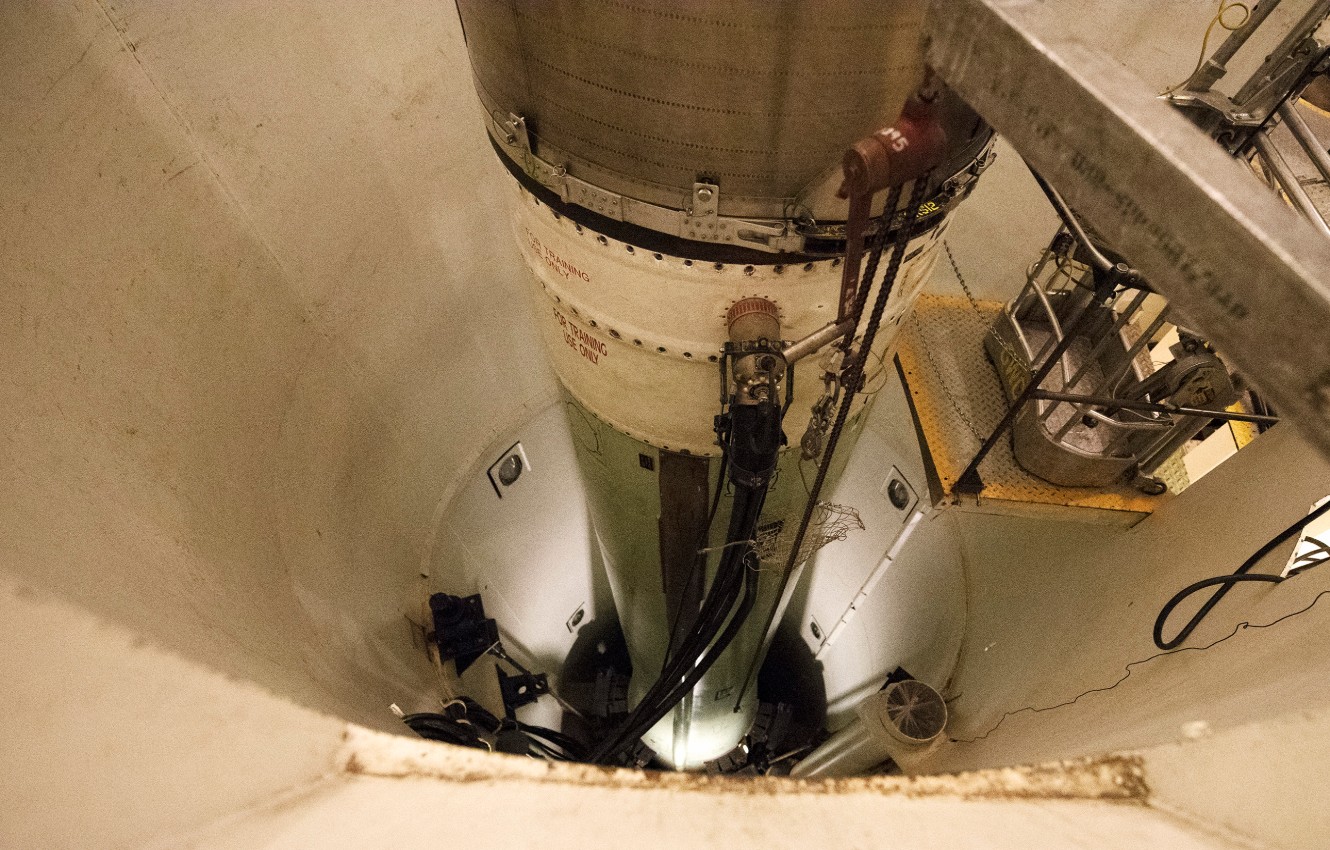
Schelling was right: Intercontinental ballistic missiles (ICBMs) are by far the least valuable leg of the so-called nuclear triad, which also consists of submarine-launched ballistic missiles, and air-delivered cruise missiles and gravity bombs.
So long as U.S. adversaries possess nuclear weapons, we believe the United States should maintain a safe, secure, and effective nuclear arsenal to deter nuclear attacks against itself and its allies. But the Trump administration’s approach to sustaining and upgrading the arsenal is unnecessary, unsustainable, and unsafe. Nowhere is this more evident than with respect to its plan to build a new ICBM.
Instead of proceeding with current plans to build an entirely new ICBM system at a cost that is likely to exceed $100 billion, the Pentagon could save scores of billions — without sacrificing U.S. security — by continuing to rely on a smaller number of existing Minuteman III missiles.
Trump administration talking tough about another government shutdown for border wall funding
On Thursday, the Senate failed a veto override on Donald Trump’s emergency declaration, which is being used to purloin funds appropriated for other programs and use them for his border wall. That sets up yet another budget fight that will simmer along between the House, Senate, and White House for the next month. It also sets up another fight over a Trump government shutdown.
ARTICLE BY JOAN MCCARTER | dailykos.com
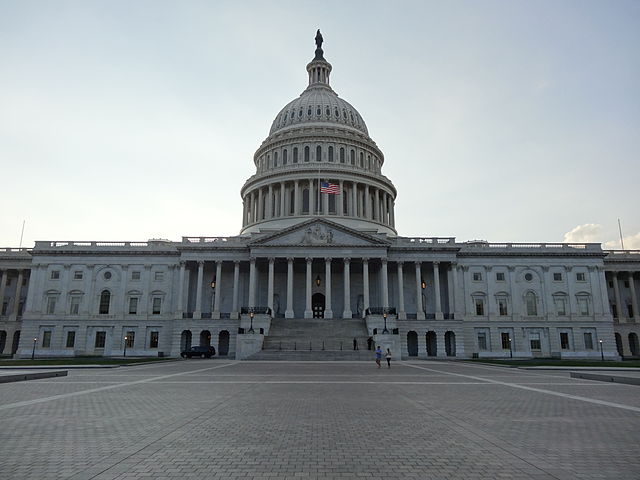 Before the August recess, all parties agreed to a continuing resolution to fund the government until the week before Thanksgiving, in anticipation that all the individual spending bills for all the departments would be passed and signed by then. What it really set up was another fight with Trump. “Trump is not interested in signing other domestic spending bills until there is agreement on the border wall,” a senior administration official told The Washington Post.
Before the August recess, all parties agreed to a continuing resolution to fund the government until the week before Thanksgiving, in anticipation that all the individual spending bills for all the departments would be passed and signed by then. What it really set up was another fight with Trump. “Trump is not interested in signing other domestic spending bills until there is agreement on the border wall,” a senior administration official told The Washington Post.
2018
Joseph Rotblat
“Nuclear disarmament is not just an ardent desire of the people, as expressed in many resolutions of the United Nations. It is a legal commitment by the five official nuclear states, entered into when they signed the Non-Proliferation Treaty.”
-Nobel Laureate Joseph Rotblat
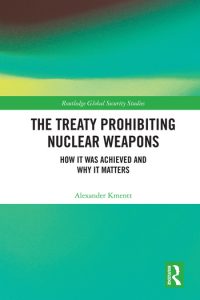 The Treaty Prohibiting Nuclear Weapons: How it was Achieved and Why it Matters
The Treaty Prohibiting Nuclear Weapons: How it was Achieved and Why it Matters
By Alexander Kmentt / Copyright Year 2021
“…An authoritative record of the negotiations and diplomacy behind the Nuclear Weapons Ban Treaty which aims to prohibit the deadliest weapons invented by humankind. Ambassador Alexander Kmentt was at the forefront of the efforts, started over ten years go, to raise awareness of the catastrophic humanitarian and environmental consequences of these weapons. He provides an insightful account of how a small group of countries, supported by civil society, overcame the opposition by major nuclear weapon states…”

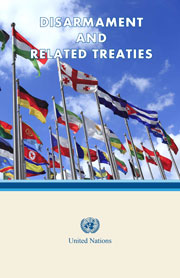
Disarmament and Related Treaties
Published 4 December 2014 by The United Nations Office for Disarmament Affairs, this publication contains the text of multilateral treaties that focus on nuclear weapons, and nuclear-weapon-free zones and other disarmament treaties.
PDF version available online here
Twelve Members Appointed to Advisory BoardFocused on Health of Nuclear Weapons Workers
WASHINGTON, DC
The U.S. Department of Labor has announced 12 appointees to the Advisory Board on Toxic Substances and Worker Health for the Energy Employees Occupational Illness Compensation Program Act (EEOICPA).
Secretary-General Ban Ki-moon,
“Together, let us demand an end to all nuclear tests and get on with the unfinished business of achieving a world free of nuclear weapons.”
–Message on the International Day against Nuclear Tests, July 2014
Videos
Nuclear Ban Treaty
Reaching Critical Will Twitter feed
Treaty on the Prohibition of Nuclear Weapons (PDF)
International Campaign to Abolish Nuclear Weapons
ICAN has posted a Flickr album of annotated photos of the UN Ban Treaty negotiations.
The Ban Treaty achievement was preceded by the three Conferences on the Humanitarian Impacts of Nuclear Weapons.
The Urgency of Banning Nuclear Weapons
General Lee Butler
“I am the only person who ever looked at all twelve thousand five hundred of our targets. And when I got through I was horrified. Deterrence was a formula for disaster. We escaped disaster by the grace of God. If you ask one person who has lived in this arena his whole career, I have come to one conclusion. This has to end. This must stop. This must be our highest priority.”
-Gen. Lee Butler (Ret.), former Commander in Chief, U.S. Strategic Command
Recommended Reading
A Murderous History of Korea
New York Review of Books, May 18, 2017
Especially now, it’s important to know the context of the Democratic People’s Republic, which, by the way, has been in existence as long as the Soviet Union
Informed Analysis of Events in and Around North Korea
Selected Press Items
Koreas agree to work toward peace and ‘complete denuclearization’
Trump’s strike on Syria is exactly why North Korea wants nuclear weapons
The Trump-Kim Summit and North Korean Denuclearization: The Good, the Bad, and the Ugly
Pence’s Anti-North Korea PR Campaign Bombs
US Vice-President Mike Pence rains on Olympic parade with Korea team snub
S. Korea, U.S. agree to work toward opening denuclearization talks with N. Korea
Could a false alarm like Hawaii trigger a war?
Japan public TV sends mistaken North Korean missile alert
Hawaii’s Nuclear Wakeup Call (and Why We Should Take MLK’s Advice)
What the Hell Happened in Hawaii?
Hawaii Panics After Alert About Incoming Missile Is Sent in Error
University of Hawaii emailed students tips on how to prepare for a nuclear attack
The New Hwasong-15 ICBM: A Significant Improvement That May be Ready as Early as 2018
North Korea signals intent to ‘complete’ its nuclear force
How U.S. Intelligence Agencies Underestimated North Korea
North Korea: Hawaii residents told to prepare for nuclear attack as tensions reach new high
California’s plans for North Korean nuclear attack revealed
The Memo: Fears escalate over North Korea
Trump at UN threatens to ‘totally destroy’ North Korea
North Korea’s Threat Pushes Japan to Reassess Its Might and Rights
North Korea responds to latest U.N. sanctions with second missile over Japan
North Korea’s nuclear plans are actually very clear. It’s far less obvious what Donald Trump will do
Hwasong 14: Not an ICBM? Still an open question
Analysis: North Korea’s “not quite” ICBM can’t hit the lower 48 states
UCS: North Korean ICBM Appears Able to Reach Major US Cities, incl. New York
North Korea Finally Tests an ICBM
How to Deal With North Korea: There are no good options
Detailed report on Nth Korea missile and nuclear weapons programs
Thinking the Unthinkable With North Korea
A Quick Technical Analysis of the Hwasong-12
North Korea Missile Test Appears to Tiptoe Over a U.S. Tripwire
2017
A Preview of Trump’s Budget: More Nuclear Bombs and Plutonium Pit Production
Santa Fe, NM – The nonprofit organization Third Way is claiming that it has received a leaked version of Trump’s FY 2018 budget that is scheduled to be released this coming Tuesday. Assuming this leak is accurate, the proposed level of funding for the National Nuclear Security Administration’s (NNSA)’s Total Weapons Activities is $10.2 billion, a full billion above what was requested for FY 2017 (and presumably granted in the FY 2017 omnibus appropriations, for which details are not yet available).
Trump’s “skinny budget” entitled “America First: A Budget Blueprint to Make America Great Again”, released on March 16, stated that it would increase funding for “the goals of moving toward a responsive nuclear infrastructure and advancing the existing program of record for warhead life extension programs.” This is where the one billion increase will be largely, if not entirely, directed.
Concerning Life Extension Programs, rather than merely maintaining and extending the lives of existing nuclear weapons as advertised, they are being given new military capabilities, despite denials at the highest levels of government. A current example is the B61-12 Life Extension Program, which is transforming a “dumb” nuclear bomb into the world’s first highly accurate “smart” nuclear bomb.
With respect to the Los Alamos National Laboratory (LANL), “responsive infrastructure” no doubt means accelerating upgrades to existing plutonium facilities and likely building two or three new underground “modules”, all for the purpose of quadrupling plutonium pit production from 20 to 80 pits per year. (Plutonium pits are the fissile cores of nuclear weapons.)
Expanded plutonium pit production is planned despite the facts that:
1) The existing stockpile does not need pit production, and none is scheduled;
2) Nuclear criticality safety concerns are not fully resolved at LANL’s main plutonium facility, which only recently restarted major operations after more than three years because of these concerns. Since then, the Defense Nuclear Facilities Safety Board has given LANL a “red grade” on nuclear criticality safety issues;
3) Disposal of radioactive wastes from plutonium pit production is still severely limited after a waste barrel improperly treated by LANL ruptured and shut down the Waste Isolation Pilot Plant for nearly three years; and
4) Future expanded plutonium pit production is for an “Interoperable Warhead” which the Navy doesn’t want and has been delayed for five years.
Jay Coghlan, Nuclear Watch New Mexico director, commented, “Fattening up our already bloated nuclear weapons stockpile is not going to improve our national security. New Mexicans desperately need better funded schools and health care, not expanded plutonium pit production that will cause more pollution and threaten our scarce water resources.”
Nuclear Watch New Mexico will be spending next week in Washington, DC for the Alliance for Nuclear Accountability’s 29th consecutive DC Days to discuss Trump’s new budget with the New Mexican congressional delegation and key committees.
# # #
Third Way’s press statement and budget spreadsheet are available at http://www.thirdway.org/newsroom/press-releases/third-way-statement-on-the-leaked-may-8-trump-budget
For more on expanded plutonium pit production please see https://nukewatch.org/facts/nwd/PitProductionFactSheet.pdf
A Preview of Trump’s Budget: More Nuclear Bombs and Plutonium Pit Production
Santa Fe, NM.
The proposed level of funding for the National Nuclear Security Administration’s (NNSA)’s Total Weapons Activities is $10.2 billion, a full billion above what was requested for FY 2017. In March, Trump’s “skinny budget” stated NNSA’s funding priorities as ‘moving toward a responsive nuclear infrastructure’, and ‘advancing the existing warhead life extension programs’.
Concerning Life Extension Programs, rather than merely maintaining and extending the lives of existing nuclear weapons as advertised, they are being given new military capabilities, despite denials at the highest levels of government. A current example is the B61-12 Life Extension Program, which is transforming a “dumb” nuclear bomb into the world’s first highly accurate “smart” nuclear bomb.
With respect to the Los Alamos National Laboratory (LANL), “responsive infrastructure” no doubt means accelerating upgrades to existing plutonium facilities and likely building two or three new underground “modules”, all for the purpose of quadrupling plutonium pit production from 20 to 80 pits per year. (Plutonium pits are the fissile cores of nuclear weapons.)
How could New Mexico’s senators support Heather Wilson for Air Force Secretary?
Commentary by NukeWatch Steering Committee member Chuck Montaño. Chuck is a federally protected LANLK whistleblower, and we’re proud to have him!
*******
It’s disturbing, but not surprising that both New Mexico U.S. Senators, and so many of their Senate colleagues, supported Donald Trump’s nomination of former New Mexico Congresswomen, Heather Wilson, to the position of Air Force Secretary. My award-winning book about the corrupting influence of money and politics, titled Los Alamos: Secret Colony, Hidden Truths, provides in depth perspective on how this occurs and why, regardless of political party affiliation.
According to the Association of Certified Fraud Examiners, most fraud, waste and abuse can be attributed to managerial malfeasance occurring at the highest levels of leadership, and a reluctance(if not outright refusal) by those with oversight authority to hold those responsible accountable. A couple of years back, Ms Wilson was caught lobbying for the Los Alamos National Laboratory, Sandia, and other federal facilities, she receiving tens of thousands of dollars a month in the process. These federal installations were later forced to reimburse the taxpayer for those monies, this being akin to the proverbial slap on the wrist with a wet noodle.
As a former auditor and fraud investigator in Los Alamos, and the once director of fraud and special investigations for the office of the New Mexico state auditor, I know for a fact that using taxpayer dollars to lobby is a blatant violation of federal and state law. I also know that employees are legally required to report fraud, waste and abuse occurring at taxpayer-funded institutions. Indeed, it is a condition of employment at federally-funded facilities. So why did New Mexico U.S. Senator’s Tom Udall and Martin Heinrich, and so many of their Senate colleagues, choose to ignore the evidence about Wilson’s lobbying activity, introduced into the record at her recent confirmation hearing? Indeed, why do our elected representatives prefer to look the other way as government whistleblower’s (AKA employees) careers get destroyed, by these employers, for reporting such malfeasance? Perhaps we are a nation of laws, but the institutions and individuals charged to enforce them are clearly selective as to how and when they choose to do so, thus ensuring the powerful get their way and, perhaps most importantly, that the status quo always always remains intact.
Charles ‘Chuck’ Montano, author Los Alamos: Secret Colony, Hidden Truths www.losalamosdiary.com
US Energy Secretary Rick Perry visits WIPP
“Perry said he is convinced WIPP is a safe solution for the nation’s nuclear waste, suggesting there are no plans to cut funding….” from KRQE.
Energy Secretary Perry Visits LANL, Promises Cleanup of Nuclear Wastes
Perry said the US can
‘No longer continue to kick the can down the road’ when it comes to cleaning up long-term radioactive and hazardous waste at the nation’s nuclear labs, and that he wants to send a clear message to Americans that ‘their families are not going to live in fear of a country that’s got waste scattered around places it doesn’t need to be….’ There are too many places where ‘the lives and health of our citizens are in jeopardy, because the federal government has failed to respond appropriately by removing this waste in a timely way…’ He wants to send a clear message to Americans that ‘their families are not going to live in fear of a country that’s got waste scattered around places it doesn’t need to be… I want to get things done. I’m a realist, and I realize we’re not going to clean it up overnight. We’re going to make progress.’
From the ABQ Journal
Trump adds to DC muck with Heather Wilson as Air Force Secretary
So much for draining the swamp. Trump and the Senate just added to the muck in Washington, DC by confirming ex-Congresswoman Heather Wilson as Secretary of the Air Force. Lockheed Martin, the world’s biggest weapons contractor, started paying her $10,000 a month the day after she stepped down from office to help devise a strategy to extend its $2.6 bilion/year management contract of the Sandia Labs without competitive bid (the Labs are in her district). She went on to get a similar contract with the Los Alamos Lab, also for $10,000 a month. Good work, if you can get it!
Now as Air Force Secretary she will oversee the world’s most expensive weapons systems made by guess who? Lockheed Martin. All this for a Defense Department that has never been able to pass a financial audit for how it spends taxpayers’ money. Sadly, it’s business it as usual for the weapons megabusiness.
In particular, it’s especially hypocritical for New Mexico’s senior senator Tom Udall to have voted for her, given that he sent out an email fundraiser immediately after Trump’s speech to Congress denouncing his cabinet nominee’s conflicts-of-interest. I think it shows that the New Mexican congressional delegation’s primary loyalty is to the nuclear weapons industry in our state, instead of to political party or even good governance.
In contrast, praise and glory to California’s senior senator Dianne Feinstein who issued a strong statement against Heather Wilson because of her possibly illegal lobbying activities. Both the Sandia and Los Alamos Labs had to pay back the US government the ~$430,000 they had been reimbursed for paying her, but there is no public record of Wilson ever paying back one red cent.
Lockheed Martin-Funded Experts Agree: South Korea Needs More Lockheed Martin Missiles
Adam Johnson writes: “As tensions between the United States and North Korea continue to rise, one think tank, the Center for Strategic and International Studies (CSIS), has become a ubiquitous voice on the topic of missile defense, providing Official-Sounding Quotes to dozens of reporters in Western media outlets. All of these quotes speak to the urgent threat of North Korea and how important the United States’s deployment of the Terminal High Altitude Area Defense (THAAD) missile system is to South Korea…
“In the past year, FAIR has noted 30 media mentions of CSIS pushing the THAAD missile system or its underlying value proposition in US media, most of them in the past two months. Business Insider was the most eager venue for the think tank’s analysts, routinely copying and pasting CSIS talking points in stories warning of the North Korean menace.
Last August (8/8/16), the New York Times revealed internal documents of CSIS (and the Brookings Institution) showing how the think tanks acted as undisclosed lobbyists for weapons manufacturers…
**Note that the top 10 corporate donors to CSIS include 5 top defense contractors: Lockheed, Northrup-Grumman, Boeing, General Dynamics and Leonardo-Finmeccanica. see CSIS
WIPP, LANL Settlement Projects In Progress
“With nuclear waste again on the road to Carlsbad’s Waste Isolation Pilot Plant, work is underway to improve WIPP transportation routes around the state….” From Carlsbad Current Argus.
WIPP Seals Off Nuclear Waste For 10,000 Years. Should It Be A Model For Storage?
“Shut down after two 2014 incidents, New Mexico’s Waste Isolation Pilot Plant accepted its first new shipments of nuclear waste last week ….” From The Christian Science Monitor.
How US Nuclear Force Modernization is Undermining Strategic Stability

A must read:
How US Nuclear Force Modernization is Undermining Strategic Stability:
The Burst-Height Compensating Super-Fuze
By Hans M. Kristensen, Matthew McKinzie, Theodore A. Postol
https://web.archive.org/web/20180623204508/https://thebulletin.org/how-us-nuclear-force-modernization-undermining-strategic-stability-burst-height-compensating-super10578
Excerpt:
The US nuclear forces modernization program has been portrayed to the public as an effort to ensure the reliability and safety of warheads in the US nuclear arsenal, rather than to enhance their military capabilities. In reality, however, that program has implemented revolutionary new technologies that will vastly increase the targeting capability of the US ballistic missile arsenal. This increase in capability is astonishing- boosting the overall killing power of existing US ballistic missile forces by a factor of roughly three- and it creates exactly what one would expect to see, if a nuclear-armed state were planning to have the capacity to fight and win a nuclear war by disarming enemies with a surprise first strike.
This is a super outstanding analysis by Mssrs. Kristensen, McKinzie and Postol. I’m no doubt naïve, but I’m hoping it will have some real political and geopolitical impact.
And how in keeping with the 2013 Defense Dept. guidance, which Kristensen was the first to point out to me. It helps to demonstrate that the American public doesn’t really have nuclear “deterrence” as claimed for a half-century. Instead, the U.S. has always had a nuclear war-fighting strategy, as first demonstrated in Hiroshima and Nagasaki.
To quote:
The new guidance requires the United States to maintain significant counterforce capabilities against potential adversaries. The new guidance does not rely on a “counter-value’ or “minimum deterrence” strategy.
Report on Nuclear Implementation Strategy of the United States Specified in Section 491 of 10. U.S.C., Department of Defense, June 2013, page 4 (quotation marks in the original) http://www.globalsecurity.org/wmd/library/policy/dod/us-nuclear-employment-strategy.pdf
As Kristensen, McKinzie and Postol point out, the geopolitical risks in radical improvements to U.S. nuclear warfighting capabilities are enormous. A secondary concern I’d like to point out is the risk to nuclear weapons reliability posed by intentionally introducing major changes to an extensively tested stockpile.
The Pantex Plant (final assembly site for US nuclear weapons) has a newsletter called The Pantexan (duh!). I recall circa 2009 that it had an article concerning the fact that the MC 4700 “super fuze” that was being installed in the then-ramping up W76 Life Extension Program had initial design and production problems. As the article boasted, those defects were detected and swiftly corrected.
However, the principle remains that introducing intentional changes can undermine confidence in stockpile reliability. The grand irony is that the Stockpile Stewardship Program has been lavishly funded because of the official rationale of preserving stockpile reliability, but I believe it has been a Trojan horse all along for using Life Extension Programs to create new military capabilities (and which the excellent analysis above reinforces).
[I have tried a few times to again find that Pantexan article, unfortunately without success.]
The above graph from the 1993 Sandia Stockpile Life Study shows that the supermajority of nuclear weapons defects occur within the first 5 years from the First Production Unit. Marylia Kelley (Executive Director of TriValley CAREs that watchdogs Livermore Lab ) and I met with Vic Reis, commonly regarded as the “father” of the Stockpile Stewardship Program, in 2004 or 2005. He explicitly said to us that the whole purpose of the Stockpile Stewardship Program was for the “other side of the bathtub curve”, i.e. when defects were going to multiply because of aging.
Guess what? That hasn’t happened, given long-established stockpile surveillance, rigorous maintenance and well-understood replacement of “limited life components” (e.g., batteries, neutron generators, tritium).
Indeed, the 1993 Sandia Stockpile Life Study itself said
We undertook this study to understand how long nuclear weapons last. We quickly learned that this is the wrong question. It is clear that, although nuclear weapons age, they do not wear out; they last as long as the nuclear weapons community (DOE and DOD) desire. In fact, we can find no example of a nuclear weapon retirement where age was ever a major factor in the retirement decision.
The more significant question is “what does it take to sustain a weapon while it is in the stockpile?”… Failures, defects, and aging problems have been rare…
[Available at https://nukewatch.org/facts/nwd/Sandia_93_StockpileLife.pdf]
So again, I think the Stockpile Stewardship Program has been a ruse to indefinitely preserve U.S. nuclear weapons while giving them new military capabilities. And now we have the trillion dollar-plus “modernization” to vastly expand U.S. nuclear warfighting capabilities.
2016
Nothing Found
It seems we can’t find what you’re looking for. Perhaps searching can help.
2015
Nothing Found
It seems we can’t find what you’re looking for. Perhaps searching can help.




